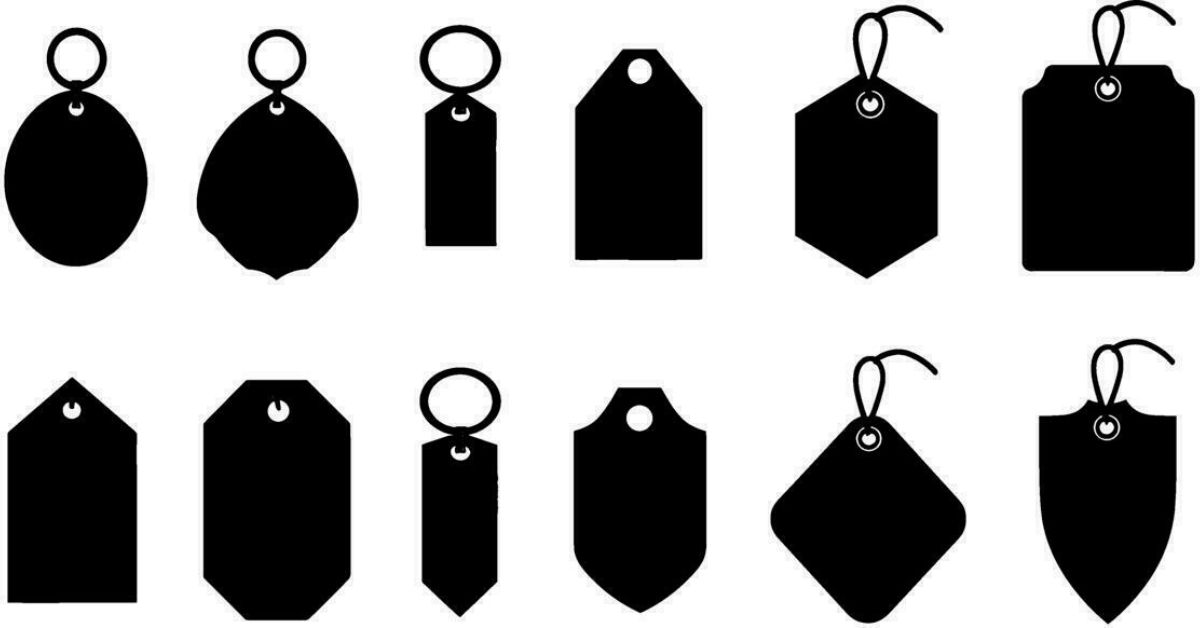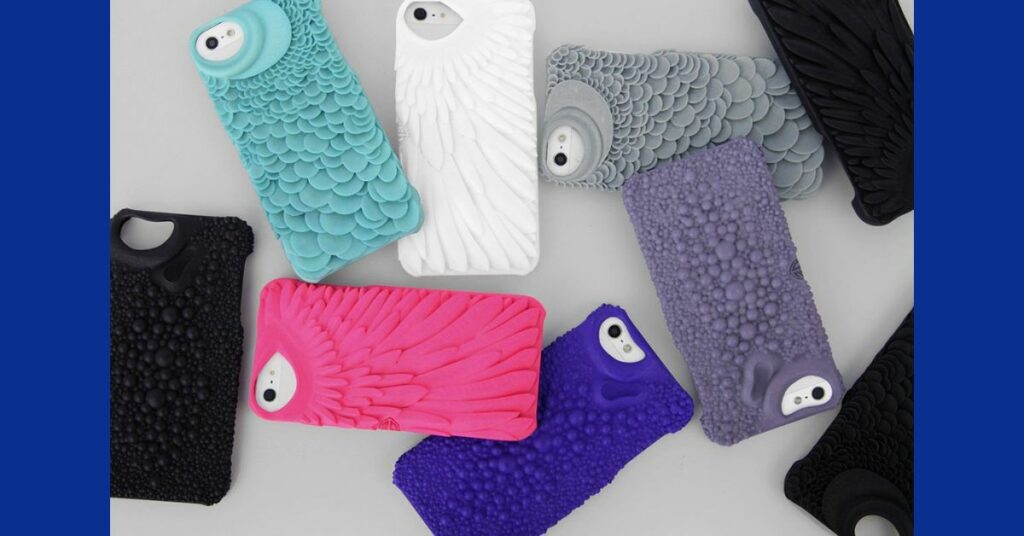Protecting your smartphone has now become a priority. You can not risk the life of your phone by relying on cheap phone cases, as they play a huge role in its protection. With so many options out there, from hard plastics to flexible silicone, it is hard to pick the one that is durable.
To decide which one is best, you must consider a few aspects. From powerful grip to quality material, choose a phone case that makes an impact. Let’s find out different types of phone cases and understand what materials are best for different needs.
Different Types of Phone Cases and Their Materials
Phone cases come in many styles and materials, each with its unique benefits.
Here’s a list of the best material for phone cases available:
- TPU polycarbonate (Thermoplastic Polyurethane)
- Polycarbonate
- Silicone
- Leather
- Aluminum
- Wooden and Bamboo
- Fabric
What Are Phone Cases Made Of?
The material name case used in phone cases varies depending on the type of protection they offer.
TPU Polycarbonate
TPU is a common material used in phone cases. This material is a perfect mixture of flexibility and durability, making it ideal for a number of users.
Perks of TPU Phone Case
- Durability: TPU is flexible and super resistant to damage. It can handle drops and impacts without cracking or breaking.
- Shock Absorption: This material is great for absorbing shock from drops, making it an excellent choice for those looking for a phone case that provides solid protection without adding too much bulk.
- Soft Feel: TPU cases are comfortable to hold, as the material is smooth and feels soft in hand.
- Scratch Resistance: TPU is resistant to scratches, meaning your case will stay looking new for years.
- Customizability: TPU cases come in a wide range of colors and designs, allowing for plenty of personalization.
Drawbacks
- Can Attract Dust and Lint: TPU cases are prone to attracting dust and lint, especially if they have a matte finish.
- Yellowing: Over time, TPU cases can turn yellow, especially if exposed to sunlight frequently.
Polycarbonate (PC)
Polycarbonate is a tough, rigid plastic material that is often used in hard phone cases. It is commonly used for high-impact protection because of its strength.
Perks of Polycarbonate Phone Cases
- Superior Protection: Polycarbonate thermoplastic polyurethane is one of the most impact-resistant materials available, offering excellent protection against drops and scratches.
- Lightweight: Despite its toughness, polycarbonate is lightweight and doesn’t add significant bulk to your phone.
- Smooth Finish: Polycarbonate thermoplastic polyurethane cases often have a smooth, glossy finish that looks sleek and professional.
Drawbacks
- Less Grip: Polycarbonate cases can be hard to get a strong grip on. You might need to pair it with a grippy material or add texture to improve this.
- Brittleness: While polycarbonate is strong, it can be brittle and can lead to cracks when exposed to extreme force. It’s great for protecting your phone in everyday situations but might not handle heavy impacts as well as TPU or silicone.
Silicone
Silicone phone cases are another popular choice. The flexible and soft phone case materials provide a smooth texture and strong grip.
Perks of Silicone Phone Cases
- Excellent Grip: Silicone has a natural grippy texture, making it an anti-slip phone case.
- Shock Absorption: Silicone is known for its ability to absorb impacts, making it effective at preventing scratches and cracks.
- Flexible: Silicone cases can be easily stretched to fit your phone, offering a snug and secure fit.
- Comfortable to Hold: The soft texture of silicone cases provides a comfortable grip, which is ideal for long periods of use and adapts to different types of phone chargers as well.
- Affordable: Silicone cases are on the affordable side, which makes them a more accessible choice for all.
Drawbacks
- Attracts Dust: Like TPU, silicone is prone to attracting dust, lint, and debris, which can accumulate over time.
- Prone to Staining: Silicone cases can stain easily, especially if they come into contact with substances like ink or makeup.
- Less Protection for Major Drops: While silicone offers decent shock absorption, it may not offer the same level of protection for major drops as polycarbonate or a more robust material name case.
Leather
Leather cases are known for their elegant and sophisticated look. Leather is typically used for flip-style cases, wallet cases, and folio cases.
Perks of Leather Phone Cases
- Aesthetic Appeal: Leather cases offer a premium, classy look that other materials can’t match.
- Durability: Leather is one of the strong phone case materials that can last if well-maintained.
- Protection: Leather cases typically have a soft interior lining that keeps away scratches and other damage.
Drawbacks
- Prone to Scratches: Leather can be prone to scratches, which can impact its appearance. While some people appreciate the weathered look, it’s not for everyone.
- Expensive: Leather cases tend to be more expensive than other materials.
- Not as Protective as Plastic or TPU: Leather doesn’t offer the same level of shock absorption or impact protection as TPU or polycarbonate.
Aluminum
Aluminum cases provide a sleek, metallic look and are commonly used in high-end cases.
Perks of Aluminum Phone Cases
- Premium Feel: Aluminum cases give you a premium feel.
- Durability: Aluminum is a durable material that offers optimum protection against drops and shock.
- Lightweight: Aluminum is lightweight. You can always enjoy the super light and airy feel phone while stepping out.
Drawbacks
- Signal Interference: Aluminum can block your phone’s signal, which can cause trouble for your connectivity.
- Scratch-Prone: Aluminum is prone to scratches, and these scratches can be more visible than those on other materials.
Wooden and Bamboo
Wooden and bamboo phone cases offer a natural, eco-friendly alternative to plastic and silicone.
Perks of Wooden and Bamboo Phone Case
- Unique Look: Wooden and bamboo cases provide a unique, natural look that gives you a unique look as compared to plastic or silicone options.
- Eco-Friendly: If you’re looking for a sustainable phone case, wooden and bamboo options are environmentally friendly.
Drawbacks
- Less Protection: These cases tend to offer less protection compared to plastic or silicone cases.
- Prone to Damage: Wood and bamboo cases are more prone to crack, scratch, or warp over time.
Fabric
Fabric cases, which may use phone case materials like denim, wool, or synthetic fibers, offer a soft, textured alternative.
Perks of Fabric Phone Cases
- Textured Feel: Fabric cases provide a unique texture and aesthetic that other materials can’t replicate.
- Comfortable: Fabric cases feel comfortable in hand, similar to silicone.
Drawbacks
- Difficult to Clean: Fabric can stain easily and may be hard to clean.
- Not as Protective: Fabric cases tend to offer less protection against drops or impacts compared to materials like TPU or polycarbonate.
Best Material for Phone Case: The Final Verdict
When it comes to selecting the best material for phone case, it really depends on your specific needs and preferences. Make sure your phone case can absorb shock and protect your phone from impact.
Now that you know what are phone cases made of, you can easily choose the best phone case material based on your lifestyle and preference. Whether you prioritize protection, aesthetics, comfort, or sustainability, there’s a phone case material that’s perfect for you.

